I prefer subtle yet unique elegance when it comes to design. If there's a choice, implied beauty over a loud, statement-making piece usually wins out. What I especially admire about the 'Sunset Gold' breath of heaven cultivar is that you are so easily able to go either way with just one plant. Whether prominently massed on a hillside, potted alongside vivid succulents or planted beneath softly textured foliage of grays and greens, breath of heaven is a plant likely to see heavy use in your garden once you get hold of it. Soft, fluttery foliage persists throughout the year, into even the darkest of days.
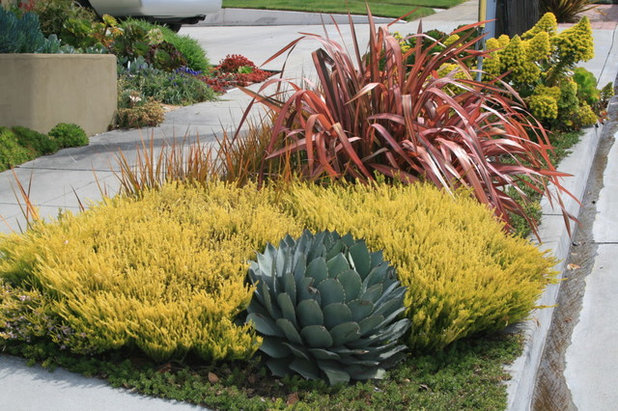
David Feix Landscape Design
Botanical name: Coleonema pulchellum ‘Sunset Gold’ (syn.
Coleonema pulchrum ‘Sunset Gold’)
Common names: Golden breath of heaven, diosma, confetti bush
USDA zones: 8 to 11; tolerant to 20 to 25 degrees Fahrenheit (find your zone)
Water requirement: Medium
Light requirement: Full sun to light shade
Mature size: 2 to 4 feet tall and 4 to 6 feet wide
Benefits and tolerances: Flowers attract bees; tolerant of wind and coastal conditions; deer resistant
Seasonal interest: Evergreen; flowers in winter and spring
When to plant: Plant cuttings in late summer and fall.
Shown: Coleonema pulchellum ‘Sunset Gold’ with Parry’s agave and Phormium ‘Dazzler’
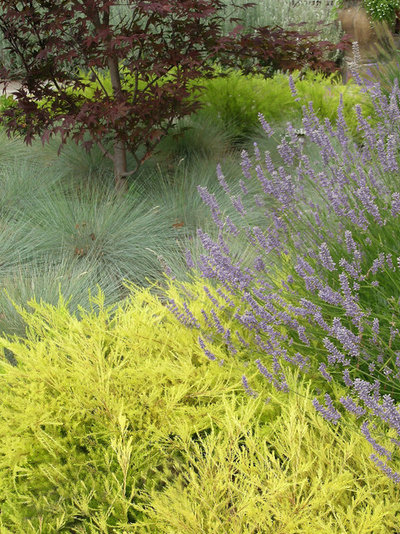
Huettl Landscape Architecture
Distinguishing traits. Golden breath of heaven is just as easily a bold or subtle garden accent. Its soft texture and low, spreading silhouette fill in planting gaps, complementing plants and gardens of all types.
It's the vivid chartreuse foliage that really stands out — the little glimmer that quickly catches the eye. Soft, heather-like stems blow easily in the wind, catching and reflecting any light.
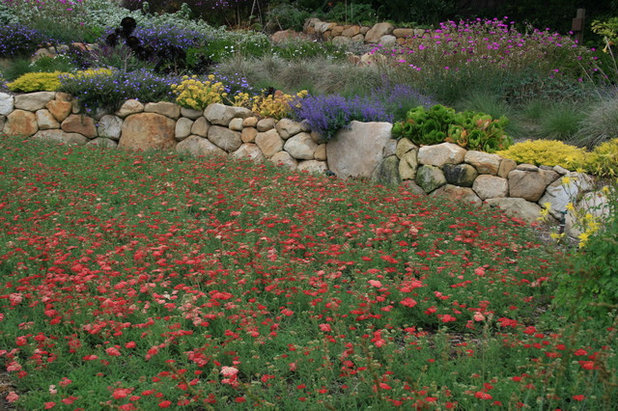
Pat Brodie Landscape Design
Golden breath of heaven is lower growing and more compact than the straight species, reaching heights of only 2 to 4 feet instead of 4 to 6 feet. When massed, it works well as a weed-suppressing ground cover on banks and hillsides.
The plant is evergreen, producing fragrant foliage year-round. From winter to spring, profuse blooms of small pink flowers emerge. Blooms may sporadically appear throughout the year.
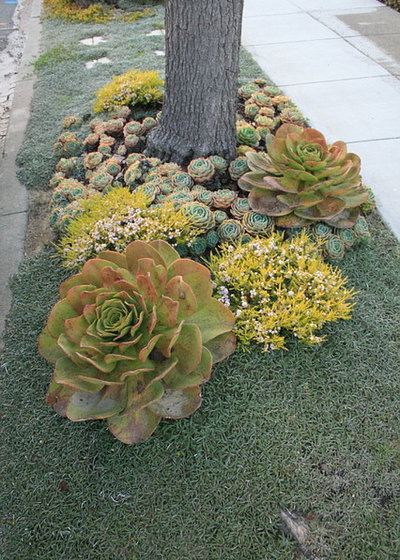
David Feix Landscape Design
How to use it. The foliage of breath of heaven is truly a breath of heaven in the garden. It’s a foil to surrounding plants due to its extremely fine texture and color. 'Sunset Gold' is particularly so. It pairs especially well with succulents, with colors that can rival that of breath of heaven but with textures that are so drastically different.
Here we see 'Sunset Gold' paired with tough ground cover Dymondia and other taller succulents in a street strip. Landscape designer David Feix says, “This cultivar of breath of heaven has the same wonderfully pungent foliage fragrance of the larger growing species, but lends itself to being kept clipped low to the ground. It makes a beautiful foliage foil for succulents, and has excellent drought and coastal wind tolerance.”
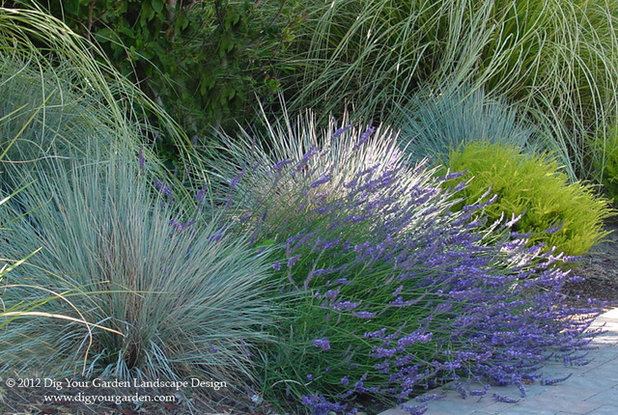
Dig Your Garden Landscape Design
Plants with aromatic foliage, like breath of heaven, are nice to plant along pathways or planter edges. Brush up against them, and a nice scented wave is released. Plus, ‘Sunset Gold’ cascades elegantly onto a path or patio — blurring the transition between soft- and hardscape.
The casual design aesthetic of cottage- and Mediterranean-style gardens works well with breath of heaven. Lavender, blue oat grass and golden breath of heaven edge this planter.
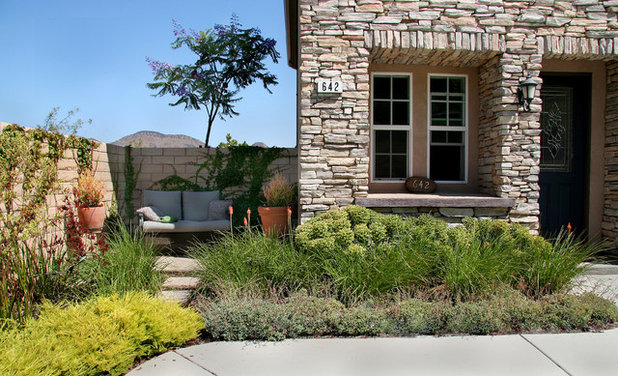
Donna Lynn - Landscape Designer
Planting notes. For best results, plant breath of heaven in well-drained soil in full sun. During the first growing season, establish strong roots by following a regular watering schedule. The plant is fairly drought tolerant and can take less irrigation after the first season.
This is a pretty easy-care plant that should thrive in most temperate environments. It is smaller than the straight species, but some gardeners like to prune this type as well.
Don’t cut back to woody stems, but you can shear lightly and regularly to prevent foliage from getting too out of control. I personally think that the plant looks best when allowed to spread and grow, so consider what sort of maintenance plan you would like to follow depending on where you plant it. You can use a general-purpose fertilizer in spring before new growth emerges.





